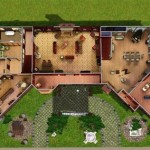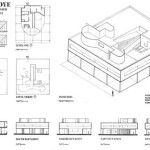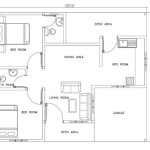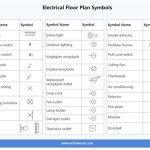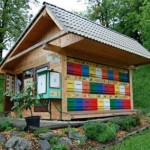```html
Birdhouse Plans for Cardinals: Attracting These Vibrant Songbirds
Cardinals, known for their brilliant red plumage (in males) and melodious songs, are a welcome sight in any garden. While they don't typically nest in enclosed birdhouses like bluebirds or wrens, understanding their nesting preferences and providing suitable nesting platforms or shelters can significantly increase the likelihood of attracting these beautiful birds to a backyard.
Cardinals are primarily ground nesters or shrub nesters, preferring dense foliage for concealment and protection from predators. This preference dictates the type of structure or habitat modifications that are most effective for encouraging them to nest within an area. Instead of focusing on traditional birdhouses with enclosed cavities, the emphasis should be on creating suitable nesting environments that mimic their natural habitat.
Understanding Cardinal Nesting Preferences
Before embarking on any construction project or habitat alteration, it is crucial to understand the specific nesting requirements of cardinals. Their preferences are key to designing and implementing successful strategies to attract them.
Cardinals typically build their nests in dense shrubs, vines, or small trees, usually within a few feet of the ground. These locations provide concealment from predators such as hawks, owls, snakes, and domestic cats. The ideal nesting site offers a combination of dense cover and structural support for the nest.
The nests themselves are typically cup-shaped and constructed from twigs, leaves, bark strips, rootlets, weed stems, and lined with soft materials like animal hair, grass, and feathers. The female cardinal usually builds the nest, although the male may assist in gathering materials.
Cardinals often choose nesting sites near a reliable source of food and water. This proximity minimizes the energy expenditure required for foraging and allows them to focus on nesting and raising their young.
By understanding these preferences, individuals can create backyard environments that are attractive to cardinals and provide them with the necessary resources to successfully nest and raise their offspring.
Creating Suitable Cardinal Nesting Habitats
Since cardinals are not cavity nesters, attracting them involves providing the right kind of habitat rather than constructing a typical birdhouse. The goal is to create a secure and comfortable environment that mimics their natural nesting sites.
Planting dense shrubs and bushes is one of the most effective ways to attract nesting cardinals. Native species are generally the best choice, as they provide the most suitable food and cover for local wildlife. Some excellent options include: hawthorn, dogwood, viburnum, and berry-producing shrubs like elderberry and serviceberry. These plants provide dense foliage for concealment and also offer a source of food for the cardinals.
Vines, such as climbing roses, honeysuckle, and Virginia creeper, can also be used to create nesting habitat. These vines can be trained to grow over fences, arbors, or trellises, providing a dense screen for nesting cardinals. Ensure the vines are non-toxic to birds, and avoid using pesticides or herbicides near the nesting area.
Brush piles can also provide suitable nesting habitat for cardinals. Piles of branches, twigs, and leaves can offer a sheltered and secluded location for nesting. However, it is important to ensure that the brush pile is stable and will not collapse, potentially harming the birds or their nest. Consider locating the brush pile near existing shrubs or trees to provide additional cover.
Providing a source of water is also essential for attracting cardinals. A bird bath, small pond, or even a shallow dish of water can provide cardinals with the water they need for drinking and bathing. Make sure to keep the water clean and fresh, and consider adding a small pump or bubbler to keep the water moving, which can help to attract birds and prevent mosquito breeding.
Avoid using pesticides or herbicides in the yard, as these chemicals can be harmful to birds and other wildlife. Instead, opt for natural pest control methods, such as attracting beneficial insects or using organic gardening techniques.
Nesting Platform Alternatives for Cardinals
While enclosed birdhouses are not suitable for cardinals, open nesting platforms can provide a supportive structure for their nests, particularly if natural nesting sites are limited. These platforms should be designed to mimic the natural fork of a tree branch or the dense structure of a shrub.
A simple platform can be constructed from untreated wood, such as cedar or redwood, which are naturally resistant to rot and insects. The platform should be approximately 8-10 inches square and have low sides (2-3 inches high) to provide some protection from the elements. The platform can be mounted on a tree trunk, fence post, or building, preferably in a location that is sheltered from direct sunlight and strong winds.
Alternatively, a more naturalistic nesting platform can be created using woven branches or twigs. This type of platform will blend in with the surrounding environment and provide a more natural-looking nesting site for cardinals. The platform can be constructed using willow branches, grapevines, or other flexible materials. The branches should be woven together to create a sturdy platform, with a slightly concave shape to help keep the nest in place.
When installing a nesting platform, choose a location that is sheltered from predators and provides a clear flight path for the birds. Avoid placing the platform near bird feeders, as this can attract unwanted attention from other birds and predators. The platform should be placed at least 6-10 feet above the ground, preferably in a location that is partially shaded.
It is important to note that cardinals may not immediately use a nesting platform. It may take some time for them to become accustomed to the new structure and feel comfortable nesting there. Be patient and allow the birds to discover the platform on their own. Providing a suitable nesting environment and a reliable source of food and water will increase the chances of attracting cardinals to the backyard and encouraging them to nest on the platform.
Regularly check the nesting platform for any damage or signs of disrepair. Repair any damage promptly to ensure that the platform remains a safe and suitable nesting site for cardinals. After the nesting season is over, the platform can be cleaned to remove any old nest material and prepare it for the following year.
By providing suitable nesting habitats and nesting platforms, individuals can create a welcoming environment for cardinals and enjoy the beauty and song of these vibrant birds in their backyard.
Remember to supplement habitat creation and platform installation with responsible feeding practices. Provide high-quality birdseed in appropriate feeders, ensuring the area remains clean and free from potential hazards. Observing cardinals from a respectful distance is also crucial to avoid disturbing their nesting activities.
```
Cardinal Nesting Shelter Birdhouse Plans Construct101

Diy Cardinal Nesting Shelter Bird House Plans

Cardinal Nesting Shelter Bird House Plans Construct101 Houses Ideas Diy Free

Cardinal Nesting Shelter Birdhouse Plans Construct101

Cardinal Nesting Shelter Bird House Plans Construct101

Cardinal Bird House And How To Attract Cardinals Complete Plans Free Houses

Free Easy Diy Wood Birdhouse Plans

Nest Box Birdhouse Plans Bird House Free Cardinal Nesting Boxes

Free Easy Diy Wood Birdhouse Plans

Diy Cardinal Bird House Construct101

